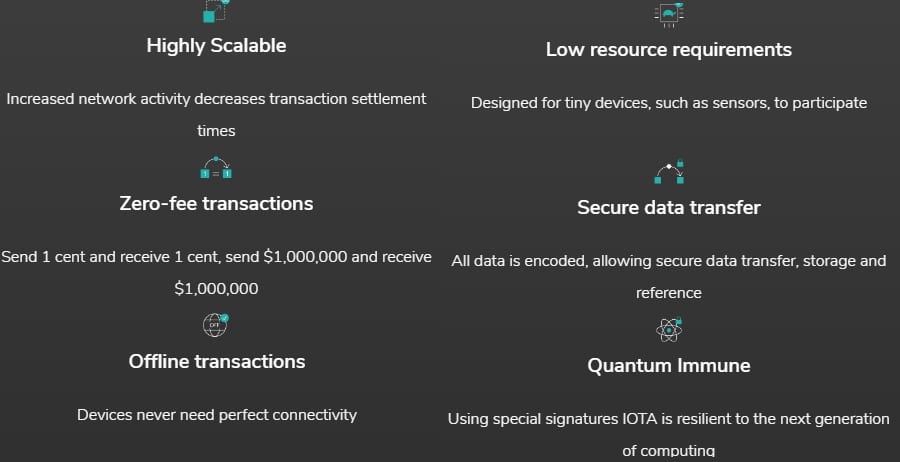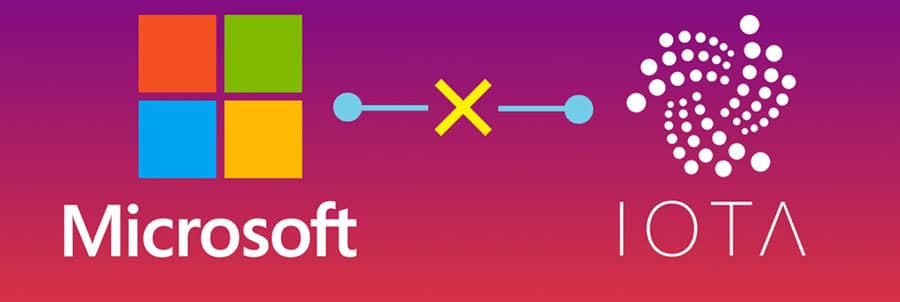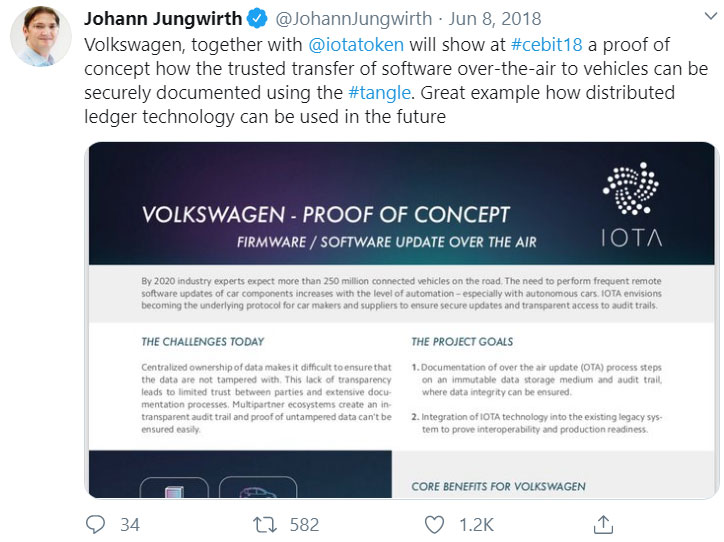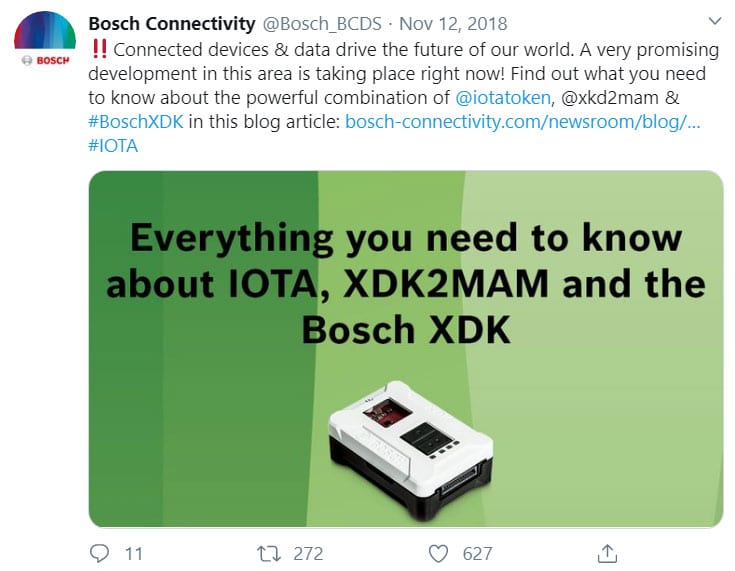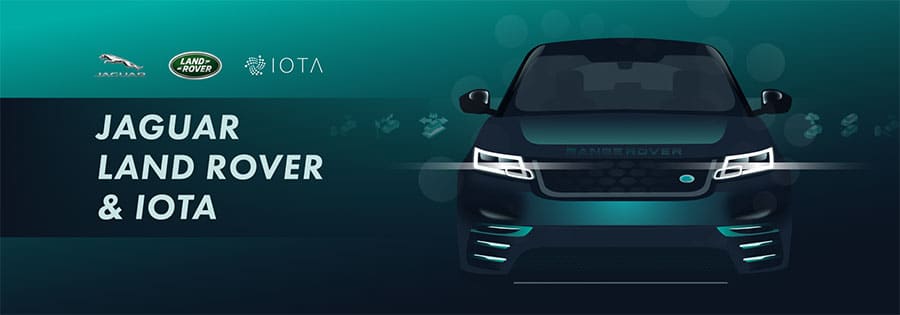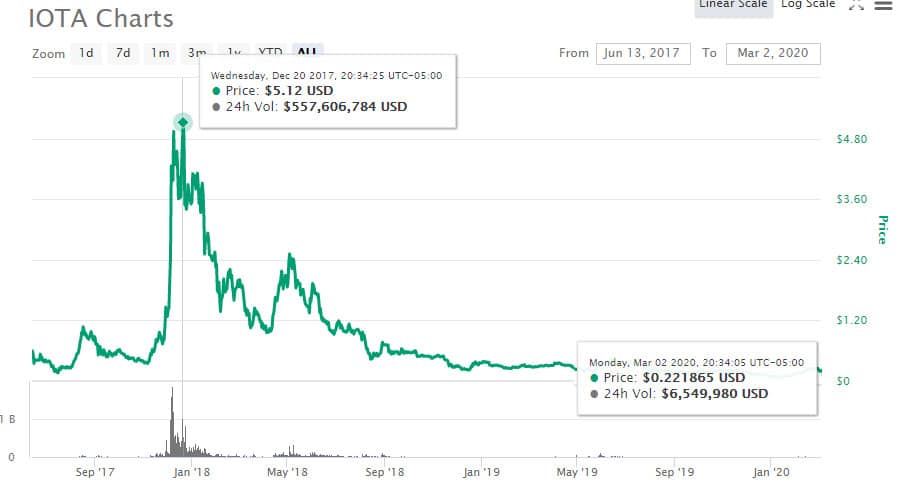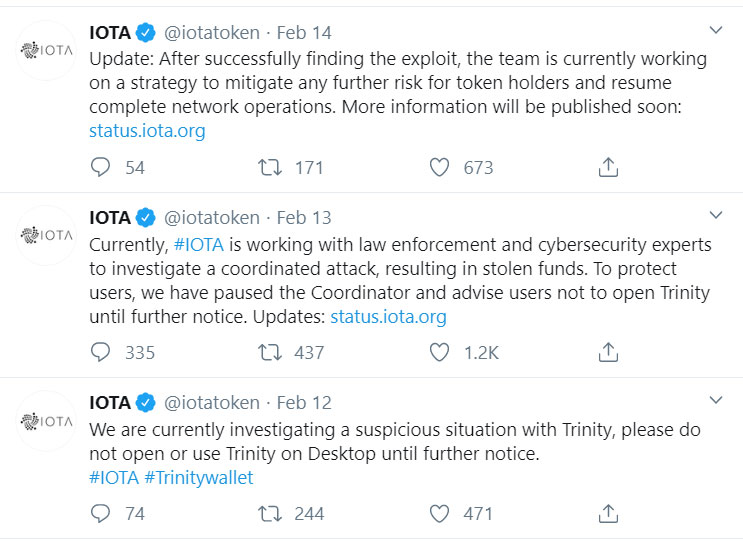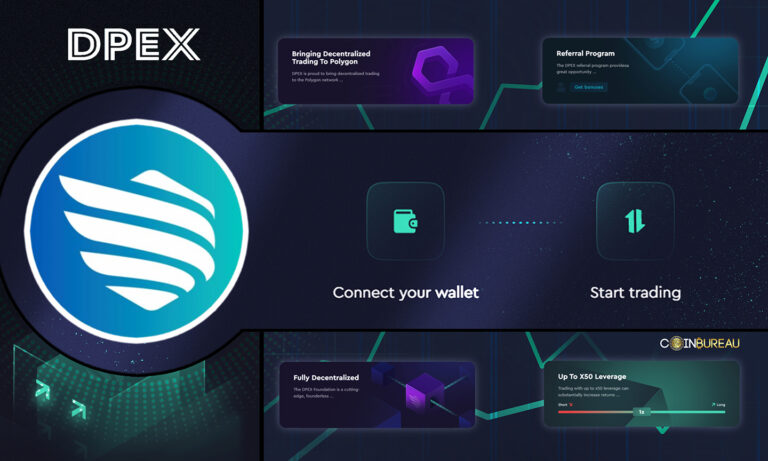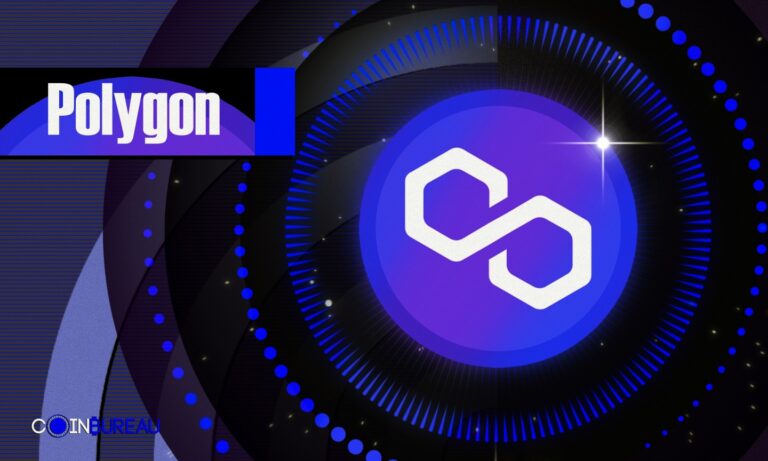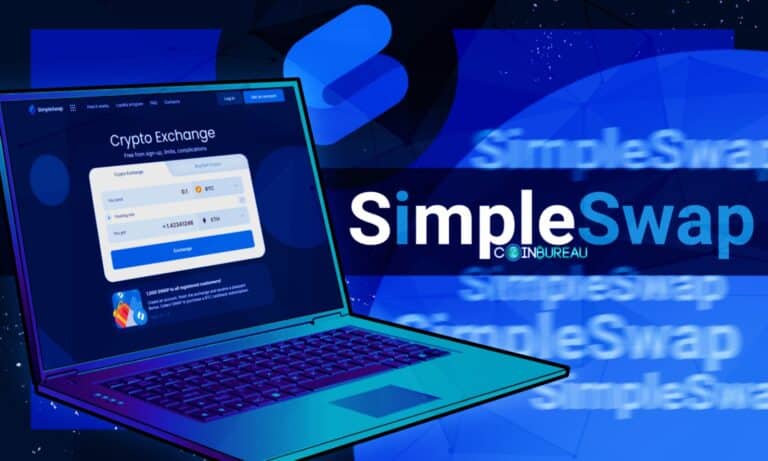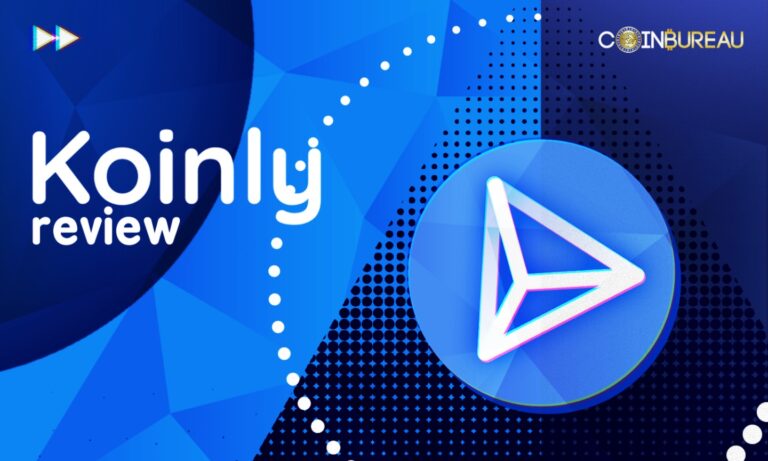IOTA is one of the most well known projects occupying the crypto space. It is known for being the preeminent distributed network for Internet Connected Devices.
Apart from being the leading project focused on distributed IoT, IOTA also employs some of the most unique technology that differentiates it from a number of other blockchain based networks. During its four year history, there have been numerous ups and down.
However, is IOTA still everything it's cut out to be?
In this IOTA review, I will attempt to answer that and give you everything that you need to know. I will also analyse the long term potential of MIOTA.
Page Contents 👉
What is IOTA?
Iota is a unique public distributed ledger that was created without the use of a chain or any blocks. That’s right, no blockchain. Instead, it uses directed acyclic graph technology and something it calls the Tangle to provide consensus without the need for miners.
IOTA has been around for longer than many of the blockchain projects out there, and the initial funding for the project came from a 2015 crowdsale that raised 1,337 Bitcoin, worth roughly $500,000 at the time.
I know that sounds like a small amount, but crowdsales and ICOs weren’t very common in 2015. All of the nearly 3 quadrillions IOTA tokens were issued to the crowdsale participants at that time, with none reserved for the founders, developers or advisors.
Because there were no tokens allocated for the team, the community donated roughly 5% of the total supply of IOTA to the IOTA Foundation and that has been used as the funding for the project.
The goal of the IOTA project is to enable the growing machine economy by powering all the machine-to-machine payments necessary to enable the Internet of Things.
With IOTA, all of the computing devices that are embedded in machinery throughout homes, businesses, and factories will be able to communicate, sending and receiving data, and using the feeless IOTA Tangle to make small micropayments to keep the data flowing.
IOTA DAG Technology
The technology of IOTA is based on the Tangle, a data structure that is based on directed acyclic graph (DAG) technology, and was created specifically for IOTA. The DAG data structure grows increasingly complex as more nodes and transactions are added, which helps provide security. Additionally, the DAG moves in one direction and does not loop back on itself.
The Tangle is a graph that is composed of nodes which are connected to each other with edges. It is directed in that the node connections have a direction, so moving from point A to point B is not the same as moving from point B to point A.
And acyclic means the structure is not circular, so that moving from node to node along the edges means always moving forward, and there is never backtracking or encountering the same node twice.

Blockchain Structure vs. The “Tangle” Dag based structure
In the IOTA Tangle, all of the connected nodes hold transactional data, and consensus is built into the system. Rather than using a Proof-of-Work blockchain where consensus is separated and miners are required to form a consensus, the Tangle requires each participant to confirm two other transactions in order to get their own transaction confirmed. This gives us a completely decentralized and self-regulating peer-to-peer network.
This consensus mechanism allows IOTA to remain feeless, and it will always remain feeless no matter the size of the network. By eliminating miners there is no need to pay anyone directly in the network. Instead, each user is paying by using a very small amount of their computing power to confirm two other transactions.
This works because as each transaction is confirmed and those transactions that have confirmed it receive confirmations themselves, there becomes a build-up of weight behind the transactions. And the greater this weigh the more reliable and immutably secured each transaction becomes.
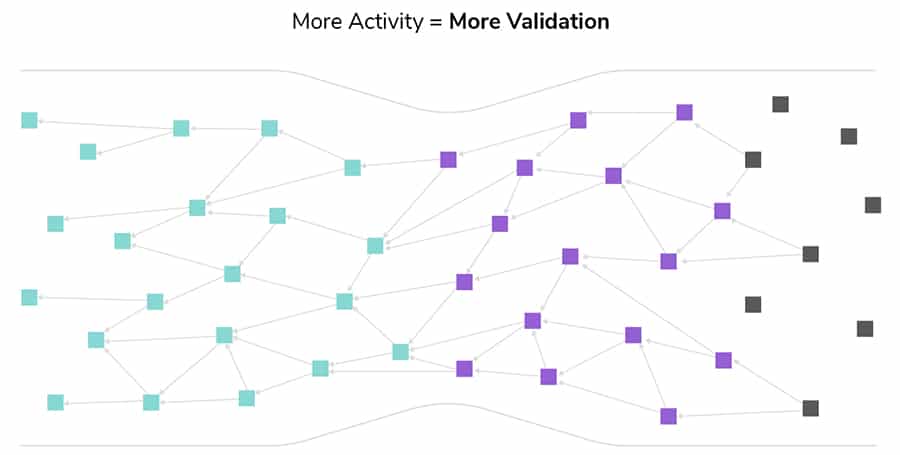
More Activity leads to high Scalability and Transactions
One issue that IOTA has faced since the start is the fact that this DAG network could be taken over by an attacker gaining control of just 33% of the hashing power on the network. In order to avoid this happening the IOTA Foundation has introduced a special node called the Coordinator.
This Coordinator is controlled by the IOTA Foundation and it protects the IOTA Network from attacks. Because it makes the network centralized the use of the Coordinator has been criticized.
The IOTA Foundation says that once the network becomes large enough the Coordinator will no longer be needed and it will be decommissioned at that time, making IOTA completely decentralized.
IOTA Use Cases
IOTA isn’t just a theoretical network, it has real world use cases and applications that continue to expand as the IOTA network grows and gains increased adoption. Below are a few of the current use cases.
Smart Cities
Taipei signed an agreement with the IOTA Foundation in January 2018 to test the IOTA technology in transforming the city into a futuristic smart city. The earliest tests involve the creation of a digital ID card based on the Tangle, and integration of Iota into air pollution monitoring devices.
Perhaps most importantly, the Taipei government feels that citizens will have more trust in government services once data integrity is ensured through the use of distributed ledger technology.
Smart Energy
The power and energy sector is moving towards the Internet of Things at a furious pace and the decentralization of the electricity grid began back in 2016. Because IOTA is scalable and feeless it is an ideal solution for the energy industry.
IOTA has been working with Dutch power consortium Elaadnl since 2017 in creating smart charging stations for electric cars. These stations are setup so that data transfer and payments occur automatically between car and charger. Furthermore, the same technology is being tested to create smart energy communities.
eHealth
Medical records are already rapidly moving into the digital world. This movement is already helping health care practitioners provide better, more rapid and effective care for patients. It is also helping with research initiatives. One area where IOTA believes it can improve on digital eHealth initiatives is by securing data integrity so that providers can be assured they are using reliable data.
Privacy is also a huge concern in the health care field, and IOTA can help here as well with their Masked Authenticated Messaging, which uses aMerkle tree based signature to send and receive encrypted data over the Tangle, ensuring security and privacy are kept intact.
Automotive and Mobility
The transportation industry can benefit greatly from IOTA technology and the feeless transfer of value between IoT devices. For example, vehicles equipped with their own cryptocurrency wallet can pay for tolls, parking, charging stations and other services automatically. They could also receive payments for selling data, ride-sharing and delivery services.
Supply Chains and Manufacturing
The IOTA platform will be able to assist in all phases of manufacturing and the supply chain as it can provide immutable documentation at every point ensuring the authenticity of goods.
By writing data in the Tangle we can know the origin of a product, including the country and who created it. We can know exactly when it was manufactured, and can even trace it to the employees who manufactured it.
All of this data and more can be recorded and stored, giving manufacturers, distributors and consumers more trust in the products being delivered to them.
Beyond Use Cases & into Partnerships
Over the years IOTA has built up a huge list of partners, both large and small, and it continues adding new partners and new projects, even now in 2020. Below are some of the largest and most publicisized partnerships, as well as some of themore recent projects being tackled by IOTA and partners.
Microsoft
IOTA announced all the way back in November 2017 that they were launching the first public marketplace for data on the Tangle together with Microsoft. The plan was to built the marketplace in order to monetize data. This was a perfect fit for IOTA since it’s focused on the Internet of Things (IoT), and data is the primary resource for the IoT.
According to IOTA co-founder David Sonstebo “Any kind of data can be monetized,” Sønstebø said. “If you have a weather station collecting wind, temperature, humidity, and barometric data, for instance, you can sell that to an entity that is doing climatic research.”
Just a month later it came out that there was actually no formal partnership between Microsoft and IOTA, however Microsoft blockchain specialist Omkar Naik did state in an email to IOTA.
We are excited to partner with the IOTA Foundation and proud to be associated with its new data marketplace initiative.
Despite the lack of a formal partnership, IOTA and Microsoft have continued to work on technological innovations based off IOTA’s Tangle network.
Volkswagen
With the automotive, supply chain, and manufacturing sectors all a focus of IOTA’s use case it comes as no surprise to see Volkswagen as one of the partners of IOTA. Driverless technology is just one application that IOTA can help solve, with sensory data from vehicles being added to the database to improve each future iteration of the technology.
Volkswagen made its partnership with IOTA public in January 2018 and hopes to use the mobility technology as part of its future development.
IOTA began collaboration with Porsche on Program 4 in 2018. The program is expected to be the development of an electric Porsche, but details of the project have been kept secret.
DnB
In May 2018 IOTA and DnB, the largest financial group in Norway, signed a cooperation agreement to drive open innovation and co-creation in the space of citizen centric innovation, machine economy and decentralized data marketplaces.
The partnership was meant to place an emphasis on data privacy management systems and formulating new business models.
Bosch
Bosch was one of the first companies to announce a partnership with IOTA. The two began working together in October 2017. Bosch sees great potential in the technology being developed by IOTA, and believes it will mesh well with Bosch’s own technological initiatives.
Bosch is an engineering and electrics firm and is the largest supplier of automotive parts in the world. It was already heavily invested in the IoT space through its Cross Domain Development Kit, which is a programmable sensor device that connects to the Internet of Things and has innumerable use cases.
The partnership between the two companies was a natural fit for two pioneers in the IoT space.
Fujitsu
IOTA entered into a partnership with Japanese electronics firm Fujitsu at the same time as the Microsoft partnership, with the same goal of developing a marketplace to monetize data. In August 2018 they released a paper explaining the use of IOTA-focused blockchain as an immutable data storage medium for their audit trail process, which caused optimism around IOTA to surge.
In April 2019 Fujitsu demonstrated a Tangle-based system described as “a new protocol standard when it comes to IT products and services.” The system was debuted at the Hannover Messe industrial trade fair, the largest such trade fair in the world. It is expected to be first utilized in Fujitsu’s Augsburg smart factory.
Jaguar Land Rover
Most recently (April 2019) Iota announced a partnership with U.K. based Jaguar Land Rover. The partnership will see Jaguar Land Rover rewarding drivers with Iota cryptocurrency for reporting data to Jaguar. The car maker says the funds earned could be used to pay for tolls and parking, as well as for electric charging stations.
The adoption of IOTA technology by Jaguar Land Rover is a part of its Destination Zero vision, which includes zero emissions, zero traffic congestion, and zero accidents. The envisioned solution would have drivers earning cryptocurrency for reporting on road conditions and traffic congestion. Vehicles will come equipped with their own cryptocurrency wallets to store the payments.
STMicroelectronics
In July 2019 STMicroelectronics, one of the world’s largest semiconductor manufacturers, announced that they were working on a software update to their STM32 chip that would integrate IOTA technology. The new updated chips, which can be used in all sorts of IoT devices from smartphones to smart refrigerators, will be able to send and receive data from the Tangle in real time.
In January 2020 STMicroelectronics announced that an open-source SDK for the STM32 chip had been developed and released, and that it allows the STM32 chips to operate as an IOTA node. A spokesperson for the company said developments and improvements to the SDK are ongoing, while also stating a growing number of use cases for the chips are being explored, such as examples in the smart energy sector.
Dell Technologies & Linux Foundation
In October 2019 IOTA announced a partnership with Dell Technologies and the Linux Foundation. The announcement of the partnership said the three companies were working together on a project called “Alvarium” which is meant to create a system that will validate whether data can be trusted. The project will create a data marketplace which will be capable of rating how trustworthy the data being sold is.
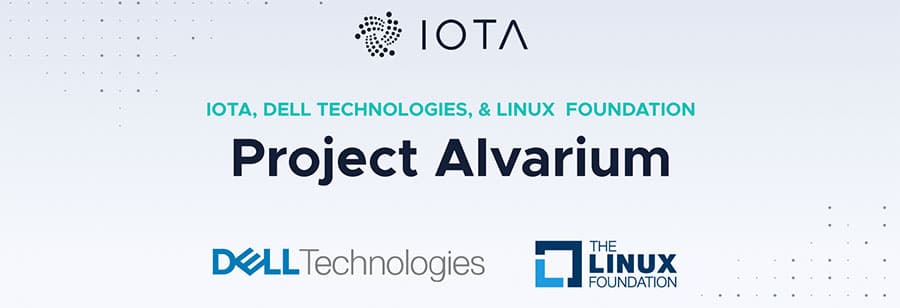
There are a huge number of small, medium and multi-national corporations that have shown interest in Iota and partnered with them on a wide variety of different projects. For a complete list see The IOTA Archive. That website also contains the latest updates regarding these and other IOTA partnerships.
The IOTA Team
IOTA was founded in 2015 by a trio of entrepreneurs who saw that the blockchain was not the most effective means of creating a distributed ledger. In 2017 the IOTA Foundation was established to oversee the research, development, and standardization of IOTA and the economy of things.
The key members of the IOTA Foundation are as follows:
David Sonstebo – David is a serial entrepreneur who co-founded the IOTA Foundation and serves as a co-chairman on its Board of Directors. Prior to IOTA, he founded a stealth hardware IP company which developed a low power processor for use within IoT devices.
Dominik Schiener – Dominik is another serial entrepreneur who founded several companies prior to IOTA, including Bithaus and Fileyy. He was a co-founder of the Iota Foundation and serves on the Board of Directors as a co-chairman.
Professor Serguei Popov – Professor Popov is the third founding member of IOTA and he serves on the Board of Directors of the Iota Foundation. He is a professor of mathematics at the University of Campinas in Sao Paulo Brazil. He is the author of the IOTA whitepaper and the creator of the Tangle.

The Three Founders of the IOTA Foundation
Jakob Cech – The Head of Engineering for IOTA, Cech stepped into the position in October 2019, making him one of the most recent additions to the executive team. He has a background in artificial intelligence and technical writing, and prior to joining IOTA he was a program manager at Microsoft.
Lewis Freiberg – Lewis serves as the Head of Ecosystem for Iota, which is primarily involved with the promotion of an understanding of Iota and its technology, as well as looking for innovations involving Iota. He has been in the distributed ledger technology industry since 2013, and prior to that he spent nearly a decade in the commercial software industry.
Holger Kother – Holger has spent his career in various IT projects at multinational companies over the past 15 years. At Iota as the Director of Partnerships he is concerned with creating partnerships between the foundation and the integrators and partners interested in using the Iota technology.
Iota Community
There is no disputing that IOTA has a passionate community behind it. This is a great asset for any project as it leads to greater awareness and fosters broader adoption for the IOTA token.
So, how big exactly is this IOTA Community?
Well, as a first point of reference, they have a pretty large and active Twitter following with over 120k followers. This is more than we have seen on a number of other projects. On this Twitter account, the IOTA team keeps the community updated with the latest announcements and there is always a great deal of interaction with these tweets.
For broader community discussion IOTA has a Discord server as well as a general Reddit subreddit and a more specific IOTA Markets subreddit. In the Discord, they have over 22,000 members and across both of the subreddits they have over 130k members.
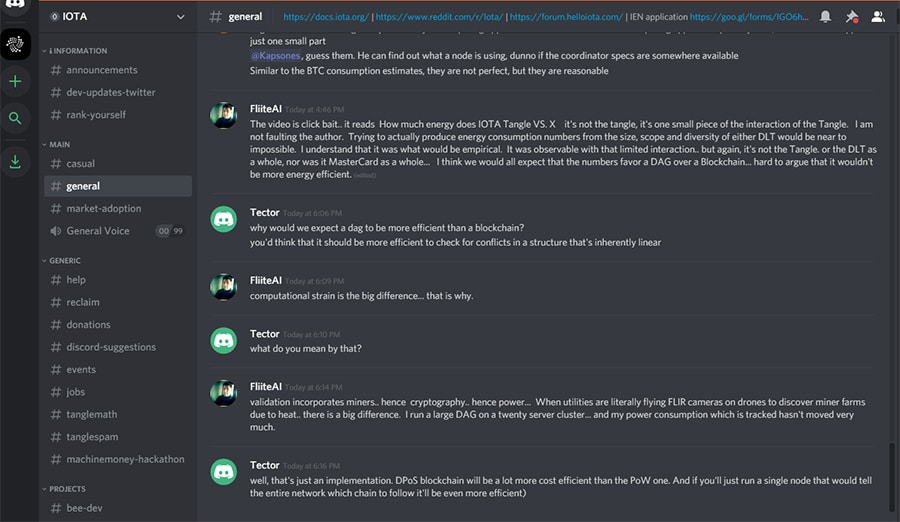
Screenshot of the General IOTA Discord Server
To get a better sense of the discussion amoung the community, I decided to jump into their Discord. There were numerous different chat threads that covered aspects of the project and ecosystem.
One thing that struck out for me in the discussion within this community is that there were very few “moon boys” to be seen. Most of the discussion were about partnerships, technology and broader adoption – always a good sign.
IOTA Token (MIOTA)
The long-term objective of the IOTA project is to create a network capable of power microtransactions between IoT devices. With IOTA an open market of devices can be created, where resource usage and transfer can be billed second-by-second in real-time.
This will open up enormous possibilities, such as vehicles that share weather and road conditions for small micropayments, or smart thermostats sharing temperature, humidity or wind data with weather stations.
The IOTA total and circulating supply is 2,779,530,283. The team decided on this number because it is optimized for ternary computation, being the largest possible 33-digit ternary number.
This total supply was pre-mined at the genesis transaction and there will never be more IOTA minted or mined. It is a fixed supply. Because there are no miners required to secure the IOTA network there are no incentives for anyone to try and raise network fees by slowing the network, or any other conflict of interest.
MIOTA Performance
Even though IOTA tokens were created in 2015 as part of the crowdsale, it wasn’t until June 2017 that the tokens were listed on an exchange. At that time the token traded between $0.55 and $0.65.
The token was volatile from the start, dropping from its opening levels to just $0.18 a month later, and then rebounding and climbing over $1by mid-August 2017. It couldn’t hold up that high and by November 2017 it was back under $0.40, but that didn’t last for long as December 2017 was the huge rally for the entire cryptocurrency market.
It reached its all-time high of $5.69 on December 19, 2017, and quickly fell from those heights. Even so, it struggled and managed to remain above $1 until July 2018. From there is crept steadily lower and as of August 2019 it sits at just $0.265044.
There was a pop higher in the beginning of 2020, with MIOTA climbing as high as $0.34 briefly, but the news of the Trinity wallet hack on February 13 put an end to the rally that had been inspired by news of Coordicide finally putting an end to the Coordinator. As of early March 2020 MIOTA is trading at $0.223925.
Buying & Storing MIOTA
Even though it took 2 years for the IOTA token to get listed on an exchange today it is on dozens. The greatest trade volume is from Bitfinex and Binance, although there’s also a good deal of volume from Huobi Global and HitBTC (although we would avoid the latter).
Given that the volume is well spread out across exchanges, it means that MIOTA liquidity is not reliant on a single exchange. This means that if ever there was an issue with one of the exchanges, traders could always find an alternative market to place their orders.
On the individual exchange books, the turnover also appears to be healthy. The markets are deep and liquid which means easy execution for your larger block orders – no slippage.
For storing IOTA tokens the best alternative used to be the native Trinity wallet, which is available for both desktop (Windows, Mac, Linux) and mobile (Android and iOS). The recent hack involving the wallet has created concerns across the community however and even though the wallet has been patched it will certainly be some time before users regain their trust for the wallet.
Coordicide – The Evolution of IOTA
IOTA has been criticized for being too centralized, because since its early days it has implemented the use of a review node it calls the “Coordinator.” This special node acts to provide a checkpoint function on the Tangle, producing transactions called “milestones” that are meant to protect the network from attacks by bad actors.
The IOTA Foundation has long said “The short answer is that the coordinator can and will be removed if our research team is convinced that we sufficiently understand the coordinator-free Tangle.“
IOTA’s plan to eventually remove the Coordinator from the Tangle, called Coordicide, is expected to achieve the goals of scalability without centralization. The removal of the Coordinator will mark a major milestone in the goal of finally creating a Distributed Ledger Technology solution that is truly enterprise-ready.
As of February 2020 the plans for Coordicide have taken their next step forward, with IOTA announcing the replacement of the centralized Coordinator with a new decentralized consensus system being called “Shimmer.”
IOTA has said their Shimmer solution will balance decentralization with security and scalability, and it does so be pulling from naturally occurring systems, such as the flight patterns of bees and the design of the immune systems of living organisms.
New Consensus Mechanism
IOTA has added a new consensus mechanism to power Shimmer. That mechanism is a reputation-ranking system that uses something called “mana” to reward “good nodes.” Mana can also be removed for nodes that behave inappropriately. IOTA’s engineers claim this system will solve many of the problems associated with popular blockchain consensus mechanisms like Proof of Work (PoW), Proof of Stake (PoS), and Delegated Proof of Stake (DPoS).
Ever since Bitcoin launched over ten years ago the biggest issue for blockchain technology has been the tradeoffs made between decentralization, security, and scalability. The innovative new consensus mechanism from IOTA promises to solve all three problems at the same time.
The IOTA Foundation has described the consensus mechanism as a modular solution “meaning that each module can be independently replaced should new research reveal further improvements,” This is important because “software that was not designed with modular foundations will begin to stagnate. Flexibility to upgrade in the future is critical to the long-term success of such rapidly advancing technology.”
The mana reputation system will allow token holders to vote on the assignment of mana reputation points to nodes that behave well in the network, and these mana points can also be voted away at any time. The system also includes auto-peering, in which neighboring nodes share information to reach full network consensus as quickly as possible.
This solution uses far less power than the PoW mechanism. In the Shimmer mechanism more mana will allow for more transactions to be processed, solving the scalability problem. By voting up the “good actors” these nodes become more strongly embedded in the Tangle, while the “bad actors” will become orphaned and unused.
Cellular & Fast Probabilistic
In addition, IOTA is testing two new consensus systems together with the mana system of node reputation. These are Cellular Consensus and Fast Probabilistic Consensus.
With Cellular Consensus, agreement on node reputations is said to “shimmer” through the network, which creates a collective agreement that looks similar to the movement of a colony of insects. Any nodes that behave strangely are seen in the same way insects detect predators in their midst.
It should be noted that this mechanism is very difficult to mathematically implement, which means it will take likely years of testing by IOTA before it is ready to be fully deployed on the mainnet.
Fast Probabilistic Consensus has individual nodes randomly verify the behavior of other randomly selected nodes. In addition, the percentage of agreement required in each round is also random. All of this randomness makes it more difficult to attack the network.
IOTA’s Coordicide is the result of years of planning and work. While the final phase on implementation is likely to be some time in the future still, the current plan appears to have taken into consideration many or most of the issues that might arise. IOTA and its proponents believe this will finally solve the problems of scalability, decentralization, and security existing at the same time.
Chrysalis or IOTA 1.5
Immediately following the announcement of Coordicide the team at IOTA also announced the mainnet would see an immediate upgrade dubbed “Chrysalis”, which is meant to improve the transactional efficiency of the mainnet prior to the completion of the Coordicide upgrade.
Chrysalis will transition the mainnet to an enterprise-ready network until the final Coordicide improvement is ready to be deployed. The project has been named “Chrysalis” because this is the form a caterpillar takes before transforming and emerging as a butterfly.
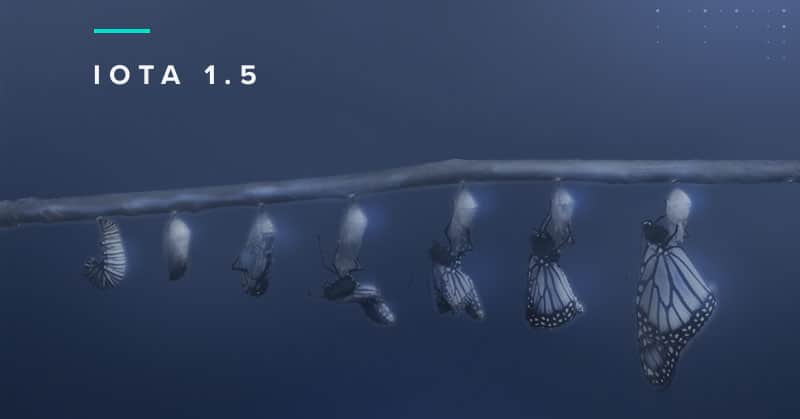
The Transition to Tangle Free IOTA
There are a number of improvements being included in the Chrysalis update, which is currently scheduled to be completed in the third quarter of 2020. One is a white-flag approach to calculating balances which will optimize for the speed and efficiency of tip selection.
It also includes a new selection algorithm for the Coordinator, allowing the network to support an increased number of confirmed transactions per second while also improving computational efficiency.
Chrysalis will also support atomic transactions, a new signature scheme in parallel with WOTS, and a new URTS tip selection. A further change will make IOTA capable of issuing tokens, which was a change requested by the IOTA community and the corporate partners.
The Qubic Protocol – Beyond Coordicide
One of the newest, and exciting projects for IOTA is the Qubic protocol. Qubic was created from the acronym QBC, which stands for quorum-based computation. The Qubic protocol is IOTA’s solution to outsourced computation, smart contracts, oracles, and much more.
The Qubic protocol specifies how IOTA will deal with quorum-based computations, which include constructs such as oracles and smart contracts. It will allow for a permissionless, fog/cloud-based, general purpose, multiprocessing capabilities on the Tangle.
Eventually users will be able to tap into the pool of global unused computing power while also helping to secure the Tangle, thus creating the IOTA-based global supercomputer.
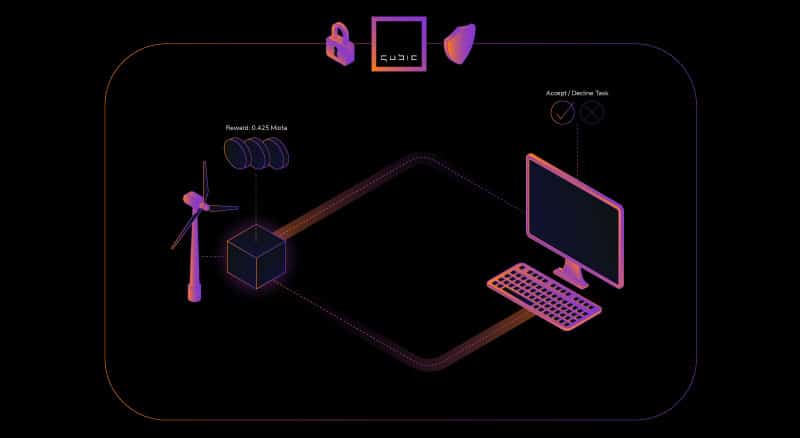
Overview of Qubic Protocol
It should be noted that while the idea for Qubic originated back in 2012 in a thread on the Bitcointalk forum, it has changed greatly since then. It is also still a work in progress, and could remain so for quite some time. The scope of the project is actually enormous.
Teo things the IOTA team were very clear about when announcing Qubic is that it will not be a new token or coin, and that there will be no airdrop or ICO for Qubic.
The original conception of Qubic had some difficult to overcome problems, and the IOTA protocol was actually designed to solve those problems by becoming a global standard for IoT payments and messaging. The fee-free nature of IOTA transactions is one of the things making Qubic possible by enabling:
- A way to safely communicate with the outside world in a trusted environment;
- A powerful, distributed fog computing platform for building complex IoT applications;
- A new type of smart contract, which collects micro-payments in real time as it runs;
- A reward system for incentivizing honest participation in the Tangle.
Concerns and Criticisms
IOTA hasn’t gone without criticism over the course of its life, with much of it centered around the technical flaws of the encryption algorithm. There is also the $11.4 million theft of IOTA that occurred in 2018 where a hacker created fake seeds and thus gained access to user’s wallets.
The biggest criticism of the project surrounds the fact that the project uses an encryption algorithm named Curl which the developers “rolled” themselves. This means they created the encryption algorithm from scratch, a highly discouraged thing in the cryptography industry.
These encryption algorithms typically need years of study to ensure they are secure, and that need was proven when Curl was found to have a property known as Collision, whereby the function will produce the same output when given two different inputs.
This could have allowed a hacker to easily steal tokens from the network. While IOTA’s developers have since corrected the vulnerability, some wonder what other surprises might lie under the code waiting to be exploited.
Another criticism of the project is in connection to the team’s avoidance of open source, which is even construed as being hostile by some. One of the cornerstone’s of most blockchain projects is an open source codebase, so with IOTA disdaining open source code, many wonder what they might be hiding.
Despite the work that has been done on Coordicide, the question about centralisation of the project was raised recently as the coordinator was shut down. This was done in response to the Trinity wallet hack.
Trinity Wallet Hack
An additional concern that only surfaced in February 2020 is the security of the official IOTA wallet app called Trinity. On February 12, 2020 it was learned that a hacker had been able to exploit a vulnerability in the wallet to steal roughly $2 million in funds.
In response the IOTA Foundation shut down the Coordinator to stop any further theft while the hack was investigated. It remained shut down for nearly 2 weeks as the Foundation first patched the Trinity wallet, and requested users to update to the latest version which included migrating their seed to a new seed.
The seed migration period has been set for February 29, 2020 through February 7, 2020. This will be followed by a 2 day optional community validation period, following which the IOTA network will finally be restarted on March 10, 2020 at which time users will again be able to make transactions. Needless to say after this second hack the trust for IOTA has taken a severe blow.
Conclusion
Iota is certainly one of the more unique crypto projects, with the use of the Tangle a direct departure from the usual blockchain solutions. The goal of powering the Internet of Things is probably one of the loftiest in the space as well. And with the Tangle providing feeless transactions, extreme scalability, and quantum resistance it’s possible the Iota team could eventually realize their goal.
That said, the team needs to avoid any further security concerns, and the removal of the Coordinator will be a crucial step for the project. To succeed as a machine-to-machine payment system the entire protocol needs to undergo vigorous testing and most likely a long experimental process. The same is true if a data marketplace is ever to be launched on IOTA.
The hostility and disdain that the team holds for the open source community could also hurt the project in a field where developers are coming to expect open source as the norm. And there’s been some hostilities between founding members, which has already caused a divide, with founding member Sergey Ivancheglo cashing in all his MIOTA coins this past November nd walking away from the IOTA project.
Overall the Iota Foundation appears to be doing an excellent job in securing partnerships and the business development of the project. They already have a strong stable of partners, and could see adoption spread rapidly in several sectors if they can find success with their distributed ledger solution.
The recent Trinity wallet hack is certainly troubling, but is something that will fade with time. More exciting has been the release of Coordicide, and the news that there is now a timeline to shutdown the Coordinator and finally make IOTA the decentralized network it has always been meant to be.
Featured Image via Fotolia

